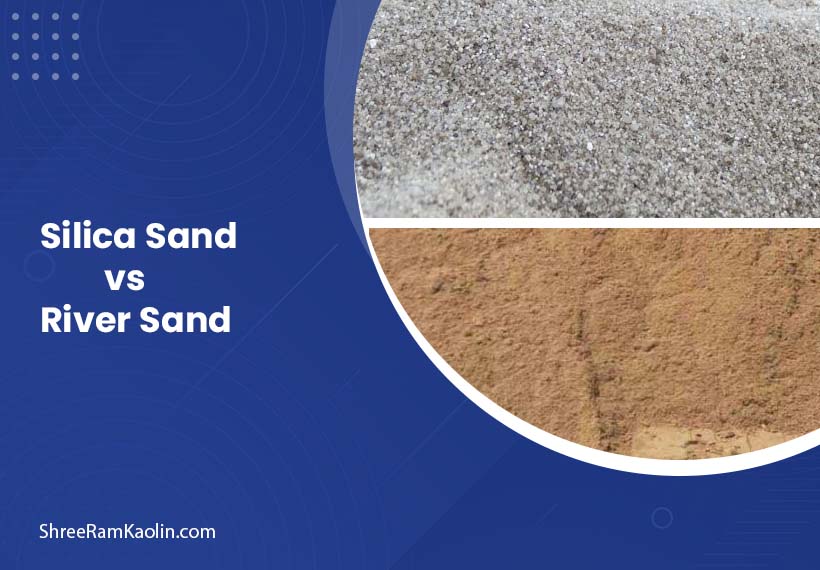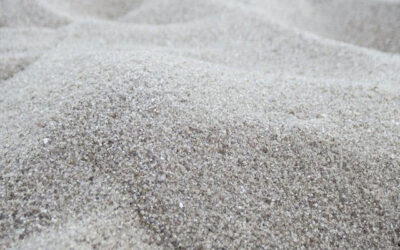Silica Sand vs River Sand: Understanding the Differences and Applications

Sand is an essential material in various industries, from construction to manufacturing. Two common types of sand that often come up in discussions are silica sand and river sand. But what sets them apart, and how do their unique properties influence their applications? Let’s dive into the world of sand and explore these crucial differences.
Silica Sand vs River Sand
What is Silica Sand?

Silica sand (commonly referred to as quartz sand) is an attractive mineral resource composed of silicon dioxide (SiO2). Highly prized due to its high silica content and uniform grain size distribution, silica sand makes an indispensable commodity in numerous industrial processes.
What is River Sand?

River sand, as its name implies, refers to material harvested from riverbeds, banks and flood plains. River currents transport and deposit this naturally-occurring substance made up of particles formed through years of erosion of rocks from thousands of years ago into river beds for further disposal by people like yourself.
Physical Properties
Composition and Structure
Silica sand primarily comprises quartz crystals, giving it a consistent chemical makeup. On the other hand, river sand may contain any number of minerals depending on its geological source; including quartz, feldspar and mica.
Color and Appearance
Silica sand typically exhibits a light, uniform hue ranging from white to pale yellow in hue; river sand shows more variation with different minerals present causing its hues to range between shades of brown, gray or even reddish hues.
Grain Size and Shape
River sand grains typically feature more regular grain sizes and shapes; with most particles having either round, subangular corners, or sometimes both features present at once.
Silica sand particles tend to have uniformed dimensions while river sand grains often feature irregular forms with both angular and round particles present, often of differing sizes.
Chemical Properties
Silica Content
As its name implies, silica sand offers high concentrations of silica-containing compounds; often exceeding 95% SiO2. The purity of this silica makes silica sand valuable in industries requiring higher grades of the mineral; river sand offers greater variety with lesser overall silica content.
Impurities and Contaminants
Silica sand tends to contain less impurities due to its formation process and processing; river sand may include organic matter, clay particles and minerals which could hinder performance in certain applications.
Sourcing and Extraction
Silica Sand Mining
Silica sand is typically mined from open-pit quarries or underground deposits. Extraction involves clearing away overburden before excavating and processing it to eliminate impurities while reaching desired grain sizes.
River Sand Dredging
River sand can typically be extracted using dredging operations in riverbeds. This method involves using special machinery to scoop or suction it off the river bottom for transportation later for processing or use.
Environmental Impact
Ecological Concerns of Silica Sand Mining
Silica sand mining may have less of an effect on water systems, yet often involves large-scale land disturbance that results in habitat loss and potential air quality issues due to dust generated during extraction and processing operations.
River Ecosystem Disruption
River sand extraction can have devastating repercussions for aquatic ecosystems. Dredging can alter river flow patterns, disturb habitats and affect water quality – potentially endangering fish populations as well as other riverine organisms.
Applications in Construction
Concrete Production
Both silica sand and river sand play key roles in concrete production, but their functions differ substantially. River sand tends to be preferred due to its uniform gradation and workability for general construction projects while silica can help produce higher strength mixes for more specialized uses.
Mortar and Plastering
River sand is frequently utilized in mortar and plaster due to its variable grain sizes that promote good workability and finish, while silica sand may be best-suited for high performance mortar applications where purity of product is key.
Foundry Casting
Silicon sand has long been used in foundries due to its excellent heat resistance and consistent grain size; making it the go-to material for molding molds and cores in metal casting processes.
Industrial Uses
Glass Manufacturing
Silica sand is the primary raw material in glass production, due to its high silica content and minimal impurity levels that contribute to clear and high-quality glass products.
Water Filtration
Both types of sands can be utilized in water filtration systems, though silica sand is commonly preferred due to its uniformity and chemical stability – particularly for industrial-scale water treatment facilities.
Oil and Gas Industry
Silica sand plays an indispensable role in hydraulic fracturing (fracking) operations, where its strength and uniformity makes it the perfect material to keep fractures open within oil and gas wells.
Cost Comparison
Pricing Factors
Silica sand usually commands a higher price due to the processing requirements and application needs associated with its manufacture, while river sand prices often depend on regional availability and extraction costs.
Long-term Economic Considerations
While river sand may initially appear cheaper, its variable quality can increase costs over time in certain applications. Silica sand’s consistent and performance characteristics offer long-term economic advantages in industries requiring precision.
Regulatory Aspects
Mining and Dredging Regulations
Both silica sand mining and river dredging fall under environmental regulations; river dredging faces more stringent regulations due to its direct effects on aquatic environments and resources.
Quality Control Standards
Silica sand applications in high tech manufacturing typically entail stringent quality standards; river sand quality may differ more considerably and requires careful sourcing and testing in critical situations.
Future Trends
Sustainable Alternatives
As natural sand resources dwindle and environmental concerns increase, industry players are exploring sustainable solutions, including manufactured sand production from recycled glass aggregates or even plastic recycling for reuse in making recycled plastic sand aggregates.
Technological Advancements in Sand Processing
Innovations in sand processing technology are revolutionizing both silica and river sand production processes by improving both their quality and environmental footprint. Such advancements include more effective washing techniques, precise grading systems, and dust suppression methods.
FAQs
Is silica sand more expensive than river sand?
Generally, yes. Silica sand is often more expensive due to its processing requirements and specific industrial applications.
Can river sand be substituted for silica sand in glass manufacturing?
Though river sand may technically work for glass manufacturing purposes, its varied composition could introduce unwanted impurities into its composition that could compromise product purity and reduce quality.
What are the primary environmental concerns regarding river sand extraction?
River dredging can disrupt aquatic ecosystems, alter river flow patterns, and negatively affect water quality, potentially harming local wildlife as well as water resources.
Are silica sand products safe to use in children’s sandboxes?
While silica sand may be popularly used in sandboxes, experts advise against its use due to risks related to dust inhalation. Many experts advise using alternatives designed specifically for play areas as an effective solution.
How are construction sand quality criteria determined?
Sand quality for construction applications can be defined by several key criteria, including its grain size distribution, shape, cleanliness (absence of impurities) and chemical composition – typically assessed through standardised testing procedures.
Conclusion
Selecting between silica sand and river sand depends upon specific application needs, local availability, environmental considerations, and regulatory regulations. While river sand continues to play an essential role in general construction projects, silica sand’s unique properties make it indispensable in various industrial processes. As we transition towards more sustainable lifestyles, expect significant shifts within the sand industry with greater attention being put toward responsible sourcing practices and innovative alternatives.

